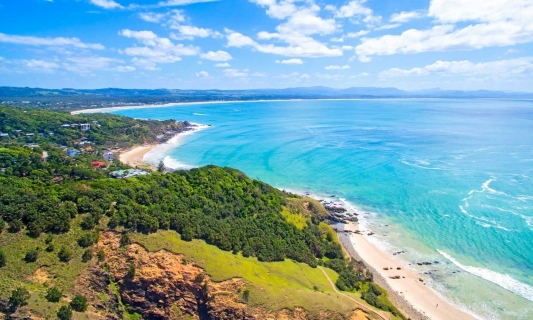Fare Rainfall & Precipitation: Monthly Averages and Year-Round Insights
This page shows both the average monthly rainfall and the number of rainy days in Fare, Huahine, French Polynesia. These averages rely on historical data collected over 30 years, from 1990 to 2020. Let's now guide you through the details for a complete overview.
Fare has a notably wet climate with abundant precipitation, recording 1840 mm of rainfall per year.
Monthly Precipitation Levels
The average number of days each month with precipitation (> 0.2 mm)
The climate in Fare shows significant variation throughout the year. Expect 283 mm of precipitation during the wettest month December, distributed over 11 rainy days.
In contrast, August offers drier and sunnier days, with around 56 mm of rainfall over 13 rainy days.December, the wettest month, has a maximum daytime temperature of 29°C. During the driest month August you can expect a temperature of 27°C. For more detailed insights into the city’s temperatures, visit our Fare Temperature page.
Annual Precipitation in French Polynesia
The map below shows the annual precipitation across French Polynesia. You can also select the different months in case you are interested in a specific month.
 heavy rainfall
heavy rainfall
 high
high
 moderate
moderate
 low
low
 almost none
almost none
Amsterdam Precipitation Compared World Wide
Fare’s average annual precipitation is 1840 mm. Let’s compare this to some popular worldwide tourist destinations:
Seville, Spain, experiences 541 mm of rainfall annually, with wet winters and dry summers typical of southern Spain.
Osaka, Japan, experiences 1507 mm of rainfall annually, spread across the year with wetter summers.
Adelaide, Australia, enjoys 511 mm of annual precipitation, with dry summers and wet winters.
Ho Chi Minh City, Vietnam, receives 1955 mm of annual rainfall, with a pronounced wet season from May to November, typical of its tropical monsoon climate.
How is Precipitation Measured?
Precipitation amounts are measured using specific gauges installed at weather stations, collecting both rain and snow and any other type of precipitation. Rainfall is measured directly in millimeters, while that from snow and ice is obtained by melting it. Automated systems often incorporate heaters to make this easier.
Information from these stations is transmitted via Wi-Fi, satellite, GPS, or telephone connections to central monitoring networks. This information is immediately updated and integrated into weather models and forecasts.
How Does Precipitation Affect Local Climate?
Precipitation has a very strong role in determining the local climate and ecosystem:
- Rainy Seasons: Many parts of the world have well-defined wet seasons where precipitation is distinctly higher. These are normally accompanied by lush vegetation and temperature patterns.
- Dry Seasons: In areas where the climate is either desert or Mediterranean, the amount of precipitation is drastically reduced, leading to a shortage of water and arid conditions.
For more detailed information about Fare’s weather, including sunshine hours, humidity levels, and temperature data, visit our Fare Climate page.
Current rainfall in Fare










